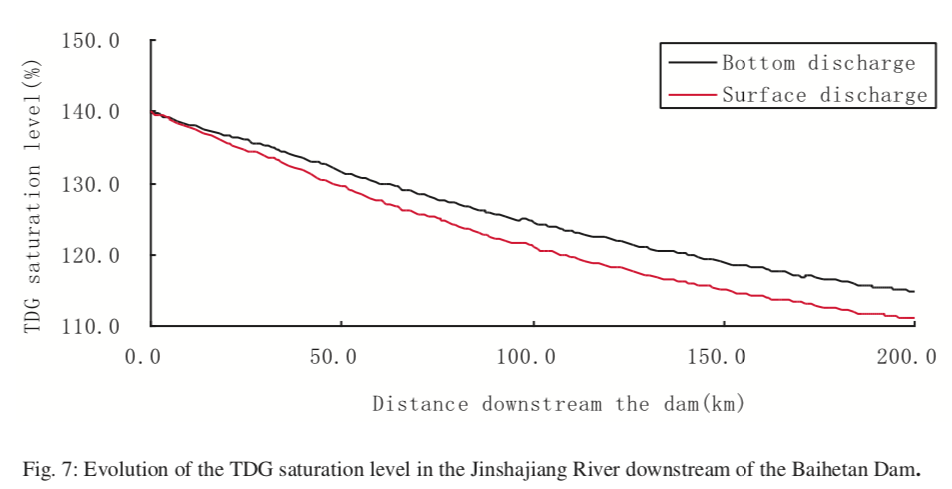Effects of hydropower reservoir withdrawal temperature on generation and dissipation of supersaturated TDG
ABSTRACT: One of the challenges for hydropower dam operation is the occurrence of supersaturated total dissolved gas (TDG) levels that can cause gas bubble disease in downstream fish. Supersaturated TDG is generated when water discharged from a dam entrains air and temporarily encounters higher pressures (e.g. in a plunge pool) where TDG saturation occurs at a higher gas concentration, allowing a greater mass of gas to enter into solution than would otherwise occur at ambient pressures. As the water moves downstream into regions of essentially hydrostatic pressure, the gas concentration of saturation will drop, as a result, the mass of dissolved gas (which may not have substantially changed) will now be at supersaturated conditions. The overall problem arises because the generation of supersaturated TDG at the dam occurs faster than the dissipation of supersaturated TDG in the downstream reach. Because both generation and dissipation of TDG are functions of water temperature, there is an opportunity to affect the TDG process through selective withdrawal structures at a reservoir. Using a combination of field observations, and hydrodynamic modelling, we analysed the dependence of the water temperature difference on TDG generation from different-elevation release structures of high- dam reservoirs. By using of the dissipation model coupled with TDG and temperature, the evolution of supersaturated TDG from different withdrawal structures was simulated and compared in a natural river reach. It showed that warmer withdrawals result in reduced generation of TDG and enhanced dissipation of TDG.


